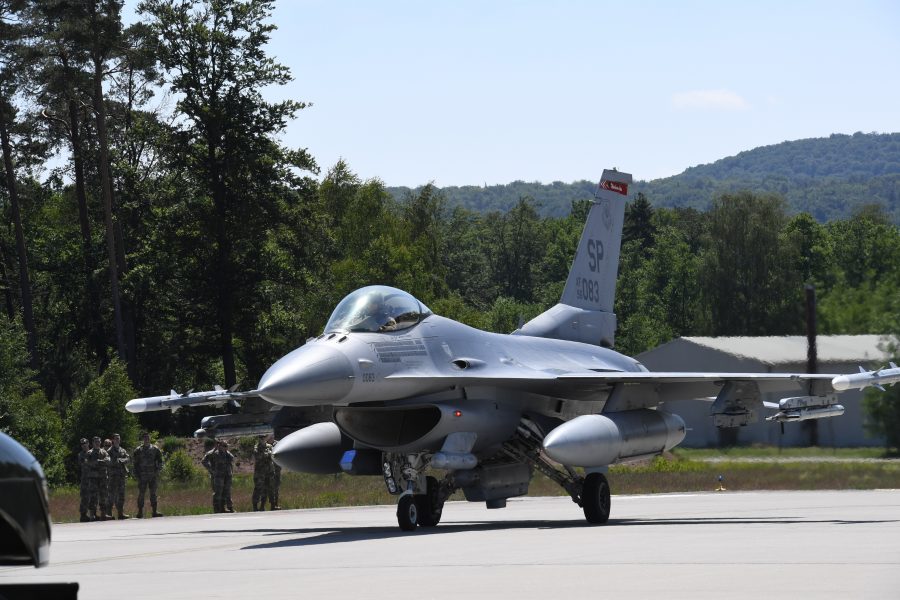Agile Combat Employment, a push to expand Airmen’s capabilities beyond their regular job so they can be more flexible in a fight, will quickly become second nature in U.S. Air Forces in Europe, as wings are tasked with practicing the concept multiple times per month.
This played out May 28 at Ramstein Air Base, Germany, where Airmen with the 435th Contingency Response Squadron, whose main job is maintenance on mobility aircraft, quickly refueled F-16s from the 52nd Fighter Wing, whose engines were running for a quick combat turn. The training replicates a real-life scenario where a combat aircraft might need to land at a forward location without traditional maintainers and quickly continue operations.

“Really what we want to see, and what we’re hoping for, is for this to become kind of part of the resting heart rate of our operations to where it’s just a common feature, a very normal expectation as far as how we generate air power and how we go about the fight in the future,” Lt. Col. Brian Sawyers, USAFE’s agile combat employment lead, said in an interview.
USAFE and Pacific Air Forces officials recently met to develop a joint summary of the concept to present to the Air Staff, explaining how ACE can be spread across the force, USAFE boss Gen. Jeffrey Harrigian told Air Force Magazine earlier this month.
Within USAFE, the Airmen with the 435th Contingency Response Squadron serve as a framework for the ACE concept. The squadron’s 85 people represent 25 different Air Force Specialty Codes and train to be able to stand up an austere air strip.
“As we look forward to the future, and as ACE has become such a high priority in USAFE, we looked at the complement of the contingency response squadron …. We realized that we had a lot of the multi-capability that we’re looking for to kind of serve as some of the people out in the forefront to help shape what ACE means in this theater,” the squadron’s operations officer Maj. Brad Seehawer said in a release. “I like to think that the 435th CRS personnel are kind of the original multi-capable Airmen.”

To practice the ACE concept, the squadron reached out to the 52nd Fighter Wing at Spangdahlem Air Base, Germany, to take part in its regular Agile Wolf series of exercises. The Airmen with the 435th CRS had been training over the past 18 months to be able to work on fighters in addition to the mobility aircraft they typically focus on.
On May 29, the two F-16s landed at Ramstein where 10 Airmen used trucks to quickly refuel the Vipers, which kept their engines running and then immediately took back off after receiving fuel. “It was quick,” Seehawer said.
The 52nd Fighter Wing is tasked with conducting two ACE-related exercises per month “as a way to validate new ways to deploy and maneuver our assets during a crisis or conflict, or even before,” said Maj. Chris Hamilton, the wing’s chief of plans and programs.
“It expands our capabilities to operate out of locations that may have varying levels of fuels support,” he said. “This gives us another option to increase our agility in the European theater.”
This exercise met that requirement at a time when movement is restricted due to the COVID-19 pandemic. In the future, the wing and other USAFE units are looking to use ACE concepts in larger exercises that include partner nations.
“It’s exciting to see these exercises starting to take place on a more regular basis, to start to see these concepts and these projects move forward and move into development, into implementation, and to see the wings rolling out on it and taking action,” Sawyer said.
